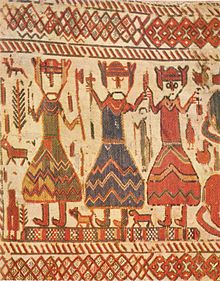
Back Funktionale Dreiteilung ALS Trifuncionalitat Catalan Trojfunkční hypotéza Czech Trifuncionalidad protoindoeuropea Spanish فرضیه سه کارکردی Persian Fonctions tripartites indo-européennes French Trifuncionalidade indoeuropea Galician 삼기능 가설 Korean Indo-Europese godentrias Dutch Foncions tripartitas indoeuropèas Occitan

The trifunctional hypothesis of prehistoric Proto-Indo-European society postulates a tripartite ideology ("idéologie tripartite") reflected in the existence of three classes or castes—priests, warriors, and commoners (farmers or tradesmen)—corresponding to the three functions of the sacral, the martial and the economic, respectively. The trifunctional thesis is primarily associated with the French mythographer Georges Dumézil,[1] who proposed it in 1929 in the book Flamen-Brahman,[2] and later in Mitra-Varuna.[3]
- ^ According to Jean Boissel, the first description of Indo-European trifunctionalism was by Gobineau, not by Dumézil. (Lincoln, 1999, p. 268, cited below).
- ^ Cite error: The named reference
Flamen-Brahmanwas invoked but never defined (see the help page). - ^ Cite error: The named reference
Mitra-Varunawas invoked but never defined (see the help page).